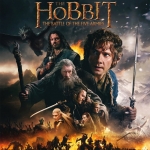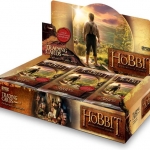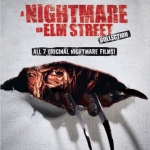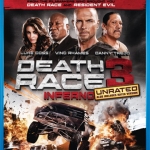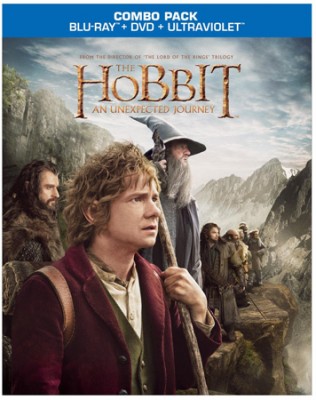
It’s hard to find a book-to-film adaptation more universally beloved than Peter Jackson’s award winning The Lord of the Rings trilogy. Sure, it has its detractors who complain about the absence of Tom Bombadil and other deviations from the source material, but most film fans agree that Jackson did a marvelous job of translating Tolkien’s Middle Earth to the big screen while managing to make some excellent movies along the way. The Lord of the Rings fandom saw a resurgence around the time the film trilogy released, rivaled only by the fervor of Star Wars fans who were anticipating their prequel trilogy around the same time. As cinematic fate would have it, the Middle Earth movies would fare critically better than the Star Wars prequels did, but both fandoms would endure long after their final movies left theaters.
With a fandom as devoted as The Lord of the Rings has, it’s not at all surprising that rumors of an adaptation of The Hobbit surface before Jackson even finished his initial trilogy. The road to The Hobbit was not as straight and obvious as it might have been, and it often seemed that the movie might never see the light of day. There even was a long stretch of time when Peter Jackson was going to be absent from the prequel’s production, and it looked all but certain that Guillermo del Toro would be helming the film. In the end, the stars aligned to bring Jackson back on board for another visit to his beloved interpretation of Tolkien’s classic world.
While The Lord of the Rings is a literary powerhouse that built and guided an entire genre, it’s very probable that more people have read The Hobbit than have read The Fellowship of the Ring or its two sequels. The Lord of the Rings is a densely packed fantasy epic with detailed journeys, politicking, and war, while The Hobbit is a much simpler tale of a quest that originally was intended as literature for children. Given the public’s familiarity with and fondness for the source material in The Hobbit and the acclaim garnered by the LOTR films, expectations for this new movie reached predictably unattainable heights as production progressed.
Peter Jackson’s first truly surprising move in the creation of his Hobbit adaptation was splitting the story into a full trilogy instead of condensing it all into one movie. The book of The Hobbit is shorter than The Two Towers (the shortest book in the LOTR trilogy), but it would be getting the same amount of screentime as the entirety of all of The Lord of the Rings. Jackson justified his decision to skeptical fans by revealing that the Hobbit trilogy would include, in addition to the story from The Hobbit, story threads and characters from Tolkien’s own appendices and notes, as well as some original creations added to the flow of Jackson’s movies. He wouldn’t simply be padding and stretching the original story to fill up three hours with the sole intent of milking moviegoers’ wallets.
It then was with much hype, some measure of trepidation, and huge expectations that audiences got to see the first third of Peter Jackson’s newest Middle Earth trilogy with the December 2012 release of The Hobbit: An Unexpected Journey. All the promised elements are present in the film. Key scenes from the early portions of the source book adapt beautifully onto the screen, and those moments do a marvelous job of evoking a sense of both adventure and nostalgia for the novel. Other Tolkien creations that didn’t specifically appear in The Hobbit make appearances in this first movie, and it all fits together fairly seamlessly. The only real and obvious stumbling points come with the original material Jackson and company created for this trilogy, such as the unnecessary inclusion of the now infamous pale Orc that acts as a principal villain and nemesis for Thorin Oakenshield, the leader of the central Dwarf party. Useless details and plot elements like that Orc aside, An Unexpected Journey holds together well and is a fun and adventurous outing.
At the same time, this film suffers from something of an identity crisis. Peter Jackson presents The Hobbit on the same grand scale and with the same amazing production values he used in The Lord of the Rings. The tone of this film is decidedly different and more whimsical, from the inclusion of the Dwarves’ plate-tossing musical number to an especially wacky action sequence featuring all the characters sledding down an underground cliffside to the famously goofy scene with the three Trolls from the book. It might be easy to categorize An Unexpected Journey as a movie targeted more toward a younger audience, and that would be a fair assumption if not for contradictory elements such as the movie’s overall pacing. Nearly every scene feels about twice as long as it should be, given the adventurous pace at which the plot seems to want to travel. Conversations take too long to complete, and even action sequences drag on interminably, and this pacing issue is the central problem with the movie.
An Unexpected Journey has a lot of great material and wonderful scenes in it. Unfortunately it turns out that there really is quite a bit of padding and stretching going on, even with the added and well executed canonical content and the Jackson additions. Not once during the more than eleven hours of the Lord of the Rings extended edition trilogy did I feel like the movies were too long. I caught myself checking the time and wanting the movie just to get on with it numerous times during An Unexpected Journey’s 169 minute theatrical cut. The slowness is not a dealbreaker by any means. If you are a fan of the previous movies, there is a lot for you to love in this film as well. Still, the problems are blatant and present enough to drag The Hobbit down a few notches from the shining examples set by its filmic predecessors.
The Hobbit: An Unexpected Journey arrived on Blu-ray and DVD this week, with both 3D and 2D editions. We received a 2D Blu-ray combo pack for review, so I was able to enjoy the same version of the film I had seen in theaters. The combo pack comes with three discs, consisting of two Blu-rays and one DVD. The DVD and the first Blu-ray house SD and HD versions of the movie itself, while the second Blu-ray contains the bonus features. There’s no audio commentary included, and the bonus features total to about two and a half hours of content. While substantial for an average movie’s extra features, that’s slimmer than we’ve come to expect from Middle Earth, and it’s a reasonable expectation that a lot of additional material is being withheld for the inevitable extended cut release of the movie. The extra content that is included here consists of about two hours’ worth of video blogs that originally posted online in the leadup to The Hobbit’s theatrical release, as well as a brief featurette about New Zealand and trailers for the movie and several video games spinning out of the franchise.
The movie looks and sounds great in Blu-ray, which is not at all surprising when you consider the amount of technical innovation that went into the movie’s visual and audio production. This Blu-ray release is a fine representation of the film and a good starting point for this newest Middle Earth trilogy. The second and third films will be hitting theaters in December 2013 and 2014, so this is a great time to catch up on the adventures of Bilbo Baggins and friends if you missed the movie in theaters. The Hobbit: An Unexpected Journey released on Blu-ray on March 19, 2013, and is in stores now.


